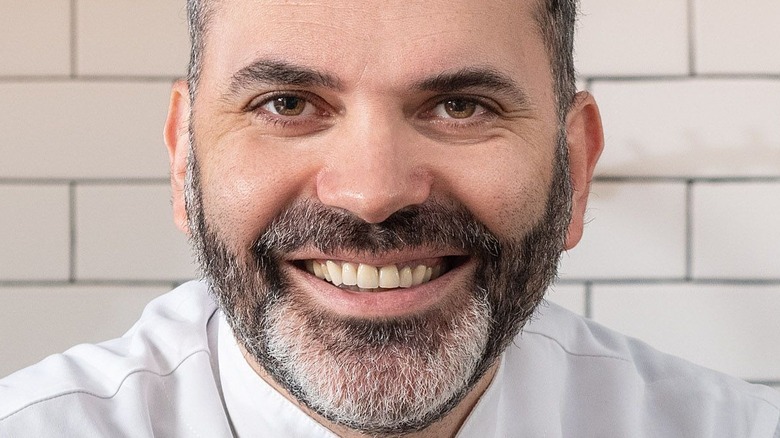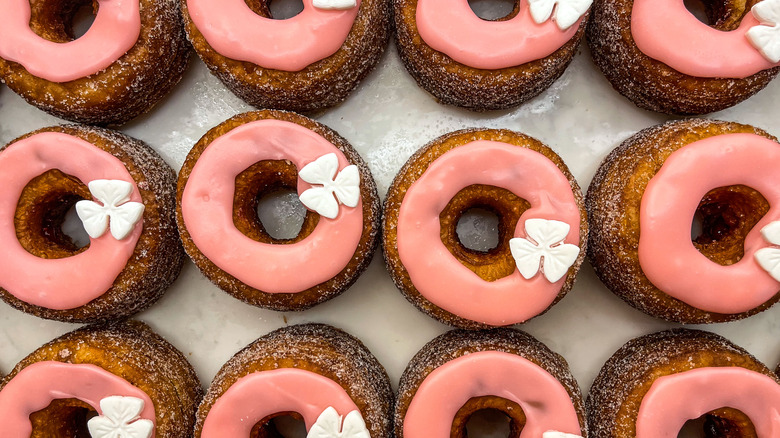Dominique Ansel's Tips For Making Cronuts At Home - Exclusive
There are few pastries out there that will have people lining up out the door every day to get their hands on one — let alone for 10 years straight. But such is the case of the legendary Cronut. Born out of Dominique Ansel's New York City bakeshop in 2013, the Cronut has gone on to inspire a trendy baking revolution, not to mention countless copycats who want to try and recreate this magic for themselves.
And while Ansel isn't the biggest fan of Cronut impersonators who inadequately rip off this signature treat, he's all about home bakers trying their hand at his recipe. He even published it in his cookbook "Dominique Ansel: The Secret Recipes" in 2014. But surely attempting to make this kind of pastry magic is anything but simple. Luckily, we got some inside tips from Ansel himself for making Cronuts at home.
Ansel spoke exclusively with Tasting Table recently about the anniversary of the Cronut and the sugar-dusted, deep-fried pastry legacy he's built. And for those who want to get down and doughy, Ansel says the most important things you can do are slow down and read the recipe carefully, not missing a single detail, and be patient enough to give the mix the proper amount of time to rest, no matter how antsy you are to fry up your Cronuts and dig in.
Patience and precision is the key to mastering the Cronut recipe
Ansel's Cronut recipe is the perfect answer for anyone who wants to up their baking game — as well as for the most dedicated Cronut lovers who don't have access to one of Ansel's three bakeries or don't want to risk their luck waiting in the long lines hoping that day's batch doesn't sell out.
It may seem intimidating but Ansel insists that "pastry shouldn't be that stressful or ... too complicated." So long as you treat it like a science more than an art. The good news is that "if you follow the recipe and you go step by step, you can actually be successful at making the Cronut recipe." It doesn't require any super fancy ingredients or intimidating equipment beyond your basic stand mixer, but the measurements and instructions are extremely precise. Ansel says to "carefully read the recipe from beginning to end first before you jump into [the] kitchen and try to do it." Along with that, he adds that you should measure your ingredients using a kitchen scale to get your quantities exact — down to the gram.
Beyond that, Ansel says you must understand "there's no shortcut in pastry." The Cronut recipe takes two to three days to let the dough develop, and "you cannot do it in less than this." Ansel explains, "The dough needs the proper rest time between each of the steps. And that's how you make it good."

